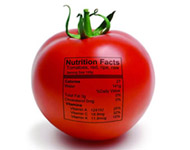Nutrition and Health Sciences, Department of

Department of Nutrition and Health Sciences: Faculty Publications
Document Type
Article
Date of this Version
2014
Citation
Journal of the American College of Nutrition (2014) 33(3): 192–197. DOI: 10.1080/07315724.2013.862490.
Abstract
Objective
Lipid-soluble antioxidants are associated with a lower incidence for many chronic diseases of aging, possibly by preventing damage from chronic inflammation. In the current study, we compared serum levels of coenzyme Q10 (CoQ10), α-tocopherol, γ-tocopherol, and C-reactive protein (CRP) between adolescent girls and premenopausal women to assess changes from childhood to midlife.
Methods
Baseline serum CoQ10, α-tocopherol, γ-tocopherol, and CRP levels were measured in 207 girls (13-19 years) and 183 premenopausal women (34-47 years) using standard methods and the two age groups were compared by t-test. The influence of age, body mass index (BMI) and race/ethnicity and interaction effects on serum values were assessed using analysis of covariance. Pearson correlation coefficients were used to assess associations between pairs of lipid micronutrients.
Results
Overall, adolescent girls had significantly lower mean serum CoQ10, α-tocopherol, γ- tocopherol, and CRP levels relative to premenopausal women (CoQ10: 376 vs. 544 ng/mL, P < 0.0001; α-tocopherol: 6.9 vs. 13.5 μg/mL, P < 0.0001; γ-tocopherol: 1.3 vs. 1.7 μg/mL, P < 0.0001; CRP: 1.29 vs. 2.13 mg/L, P < 0.0001). The differences in CoQ10 and tocopherols remained significant after adjustment for BMI and race/ethnicity. CoQ10 was significantly and positively correlated to α- and γ-tocopherol, and BMI was positively associated with CRP and γ- tocopherol in both groups.
Conclusions
Lower serum CoQ10, α-tocopherol, γ-tocopherol, and CRP levels in adolescent girls compared to women suggests that adolescents may have a reduced need for antioxidants possibly due to their lower BMI and inflammatory status as indicated by CRP.
Included in
Human and Clinical Nutrition Commons, Molecular, Genetic, and Biochemical Nutrition Commons, Other Nutrition Commons


Comments
Copyright 2014, American College of Nutrition. Used by permission.